Raking Leaves? 5 Reasons to Not Throw Them Out!
The fall yard chore of raking leaves, or even worse, blowing leaves with a gas powered blower, isn’t all its cracked up to be. I am hearing more and more calls to “leave the leaves”!
As I work hard to convert my San Antonio, Texas yard to a pollinator and insect haven, I’m learning about the important role that leaves play at this time of year.
We have several beautiful Live Oak trees in our yard. They act almost evergreen and wait until February before dropping their leaves. It’s like experiencing fall in the early spring! They immediately put out buds leaving the limbs bare for only a short time.
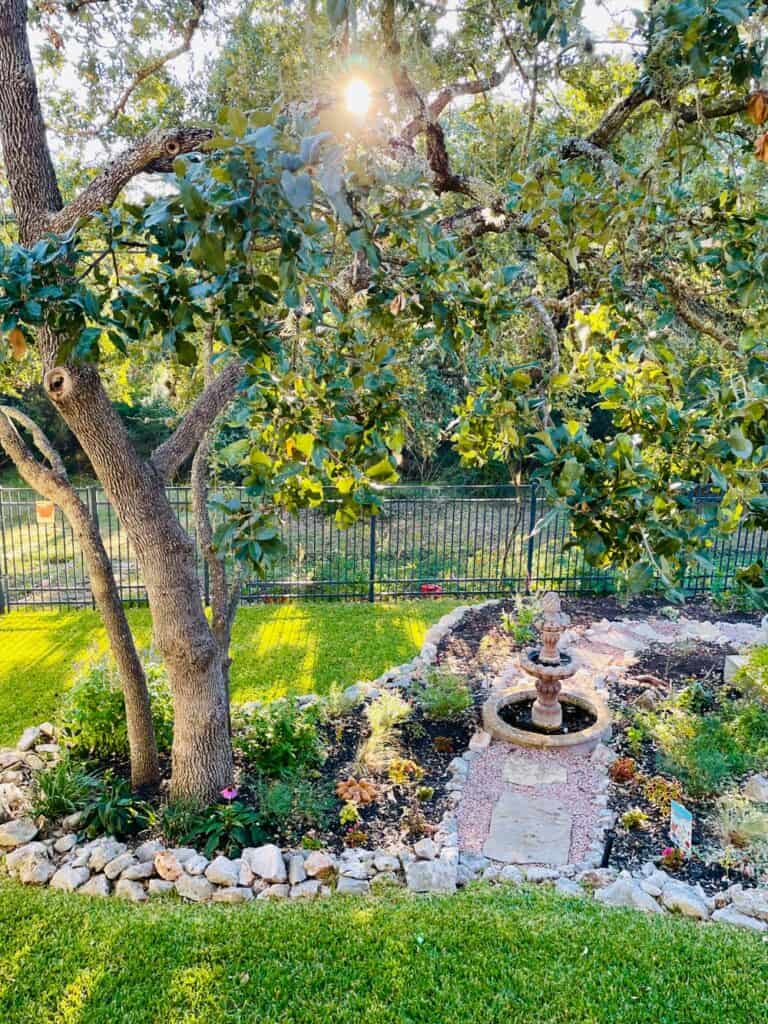
Full disclosure, in years past we’ve hired a lawn crew to rein in the leaves from our Live Oak trees with a leaf blower and carry them off. I have a ways to go to fully embracing the “leave the leaves” practice myself. However, starting last year I have tried to find ways to keep as many of the leaves in our yard as we can and I’m pledging to do better!
While a manicured, leaf-free lawn might be pretty to look at, it comes at a cost. Removing leaves strips away important winter habitat for insects and discards the eggs and pupa of many of next years’ insects, butterflies and moths. There is an entire ecosystem happening in those leaves!
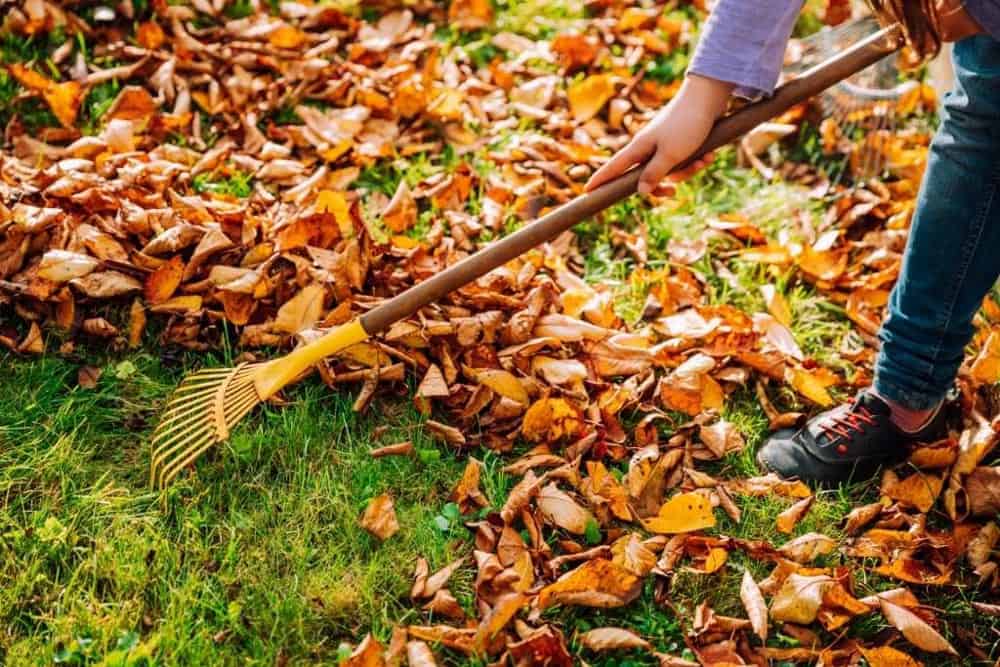
5 Benefits of Leaving Leaves
If you want to help the Earth from your own yard, leaving some of the leaf litter is a good idea. Here are five reasons why:
1. Fallen leaves provide a winter blanket for insects
Leaving a few inches of fall leaves covering the ground creates an entire hidden insect world that is protected from the winter elements. When it comes to creating a wildlife habitat in your yard, start from the ground up!
Native bees such as bumblebees winter underground. Lots of other bugs like little pillbugs, spiders, beetles, and even butterfly caterpillars live in the leaf litter.
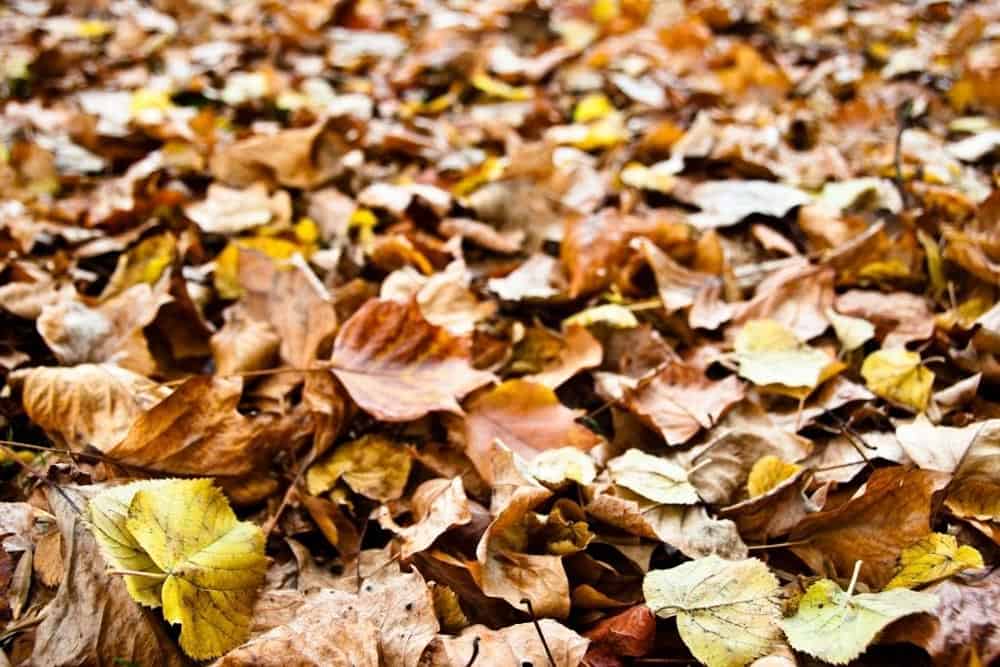
In addition, some insects lay their eggs on tree leaves to hatch in the spring. Their larvae use the leaves as their first food source.
When those leaves are raked up and thrown out, so are the future insects that were hoping to emerge post winter.
If you want to create a wildlife habitat in your yard, start from the ground up! Many of the beneficial insects living in your yard waste are important food sources for birds and other small mammals.
Want to learn more about turning your yard into a wildlife habitat? Get my tips for certifying your yard with the National Wildlife Federation.
2. Leaf litter acts as a natural fertilizer to enrich soil
When leaves break down, they return their nutrients like nitrogen to the soil. It’s like nature’s built-in fertilizer! That’s why fall leaves are a great addition to a compost bin.
Or you can just create piles of leaves and let them break down slowly into organic matter creating something called leaf mold.
I created a pile of leaves on the back side of our fence last fall and was greeted with a rich pile of organic matter to sprinkle on top of my wildflower bed this year.
3. Leaf coverage helps suppress weeds
If you have an area where grass won’t grow, but weeds will, cover it with a layer of leaves! Leaving a few inches of leaves is a great way to suppress weeds, making them a great natural mulch for your landscaping, flower beds, or vegetable garden beds over winter.
4. Leaves help retain moisture in the ground
We don’t get a lot of precipitation down here in San Antonio in the winter, so having a natural way to retain moisture in the ground is an added bonus.
A layer of leaves used as mulch in your garden will limit the need to do any supplemental watering over winter.
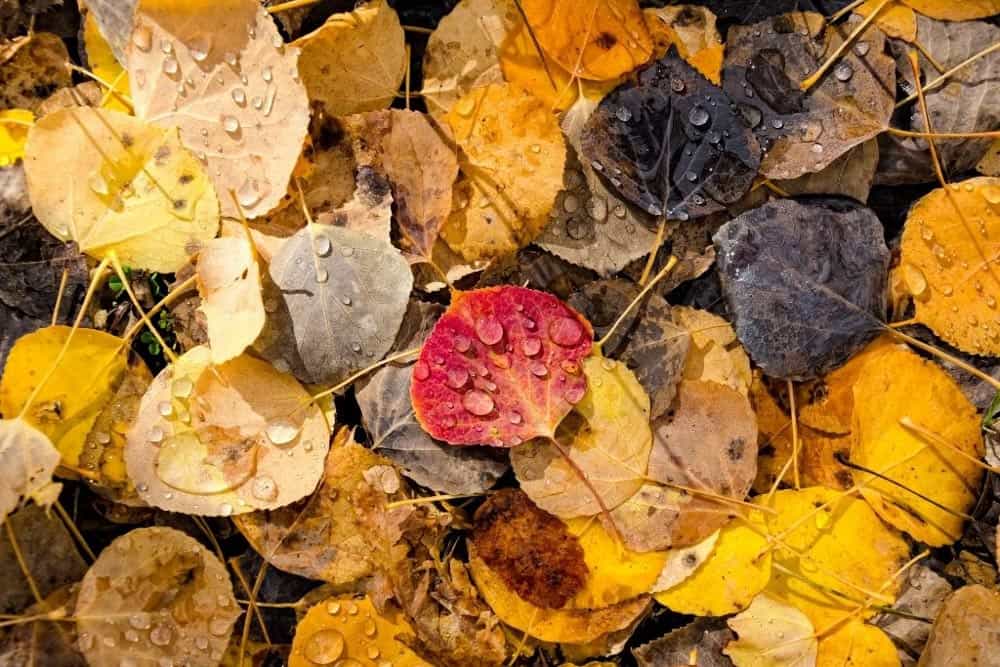
5. Leaving the leaves keeps them out of the landfill!
The worst place for leaves to end up is in a landfill. Keeping them on your property or giving them away to friends for their own compost piles or mulch is so much better for the Earth.
If you do need to dispose of your leaves, make sure to take advantage of city composting programs.
My city of San Antonio has an awesome curbside organics collection program which diverted 70,000 tons of organic material such as leaves and grass clippings from the landfill in 2020.
This post contains affiliate links. See our full disclosure.
7 Tips for Raking Leaves and Repurposing Them
Don’t want to just let the leaves lay where they fall? I understand! There is an easy way to do it while still keeping your yard looking good and your neighbors happy. Read on for my tips and tricks!
1. Keep leaves off sidewalk and driveway
Clean any fallen leaves from your sidewalk and driveway and neighbors will be less likely to be concerned about the leaves covering your grass!
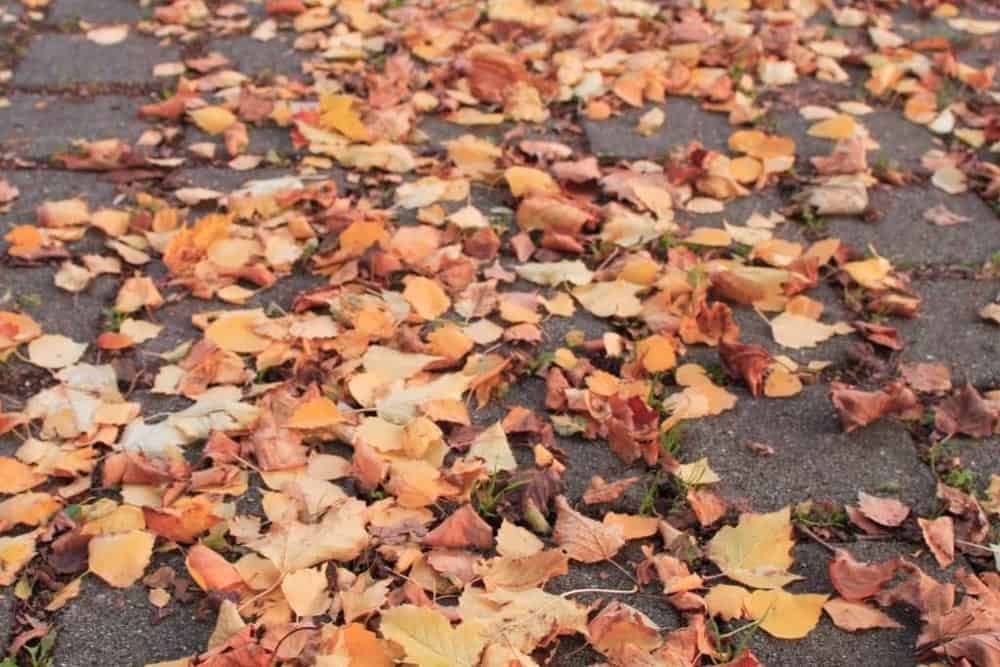
2. Move leaves from the front to the backyard
Another option is raking leaves and transporting them to your backyard where they are more inconspicuous! You can scatter a thin layer of leaves on top of the grass or add a thick layer of leaves to garden beds or areas where grass won’t grow.
3. Use leaves as mulch in your landscaping and flower beds
I think the best way to repurpose leaves is to use them in your garden beds. This layer of leaf material is an effective way to protect your plants during the colder months. You can use either whole leaves or shredded leaves to mulch your garden.
In the past, the best practice was to use a lawn mower or a leaf shredder to break up the leaves into small pieces. However, I’ve read more recently that using whole leaves is also fine and can help preserve more insect life.

Last year I used whole leaves to mulch my planting beds. I’m so glad I did, because this layer of leaf mulch protected my new native perennials from the mega freeze we had in February 2021 (multiple days of freezing temps and SNOW!)
4. Cover your vegetable beds with a bed of leaves
A layer of leaves will help enrich your vegetable garden soil for next years crop, and suppress weed growth in the meantime.
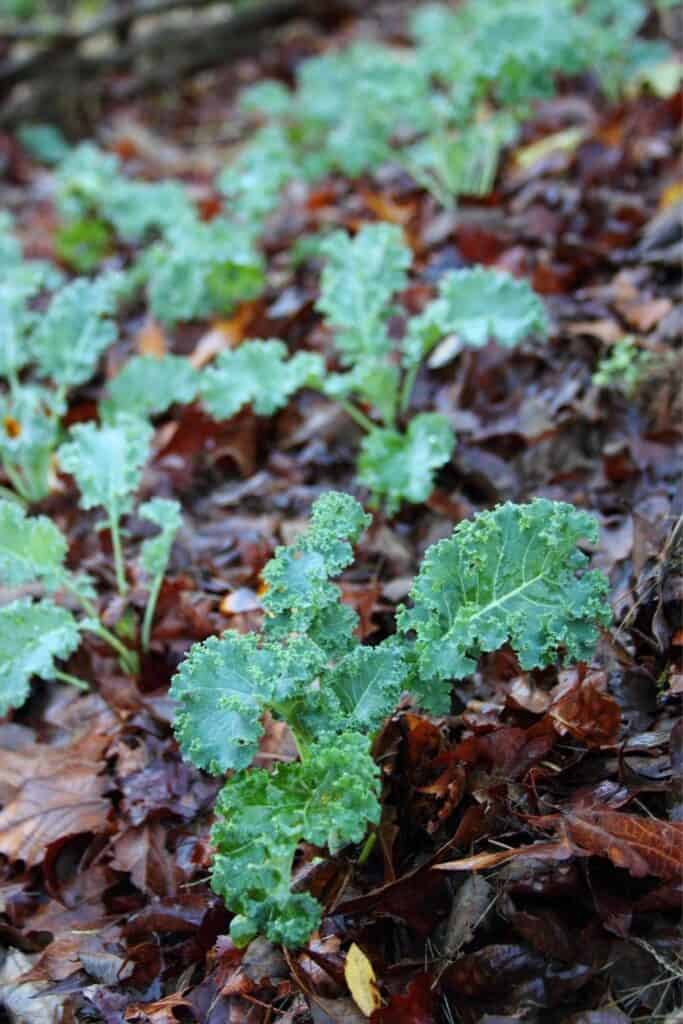
5. Create a leaf pile
Raking leaves into a pile that you let slowly break down is another option. Find an inconspicuous place to pile your leaves and then just let them be. This is my pile that I have near my wildflower bed. Over the course of the year, the bottom layers of leaves decomposed and turned into rich organic matter that I spread over my flower bed.
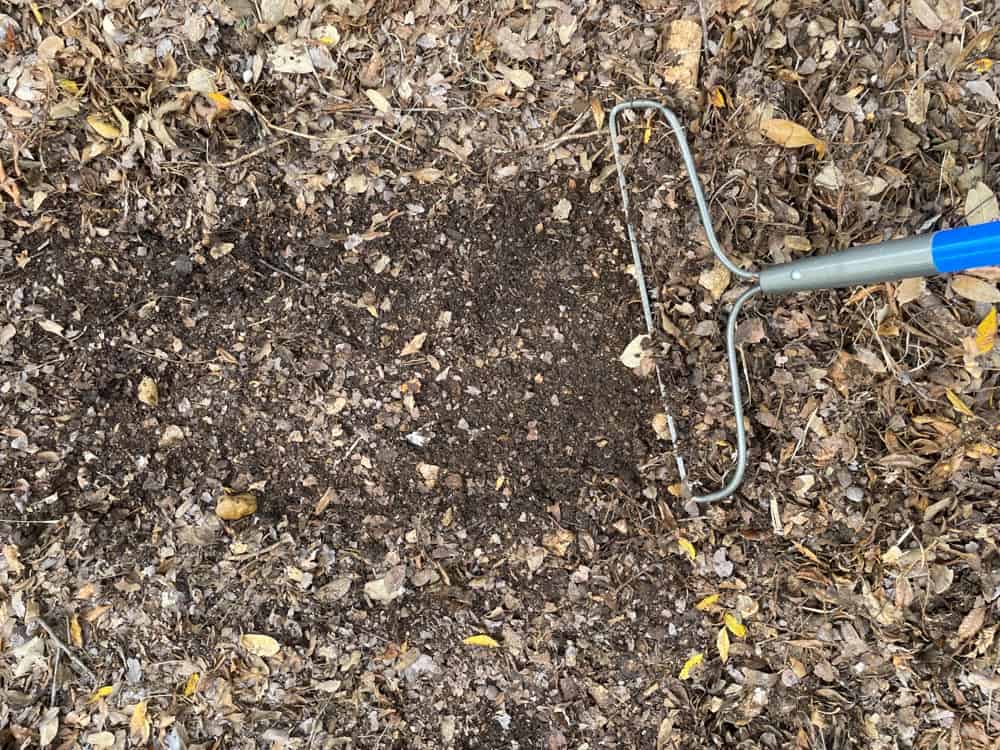
6. Keep a bag of leaves to compost
Keep a couple bags of leaves to add to your home compost pile over the course of the year. I have this compost tumbler and keep a bag of leaves next to it. I’ll add a bucket full periodically when I need more brown matter to even out the food scraps and garden clippings I add weekly.
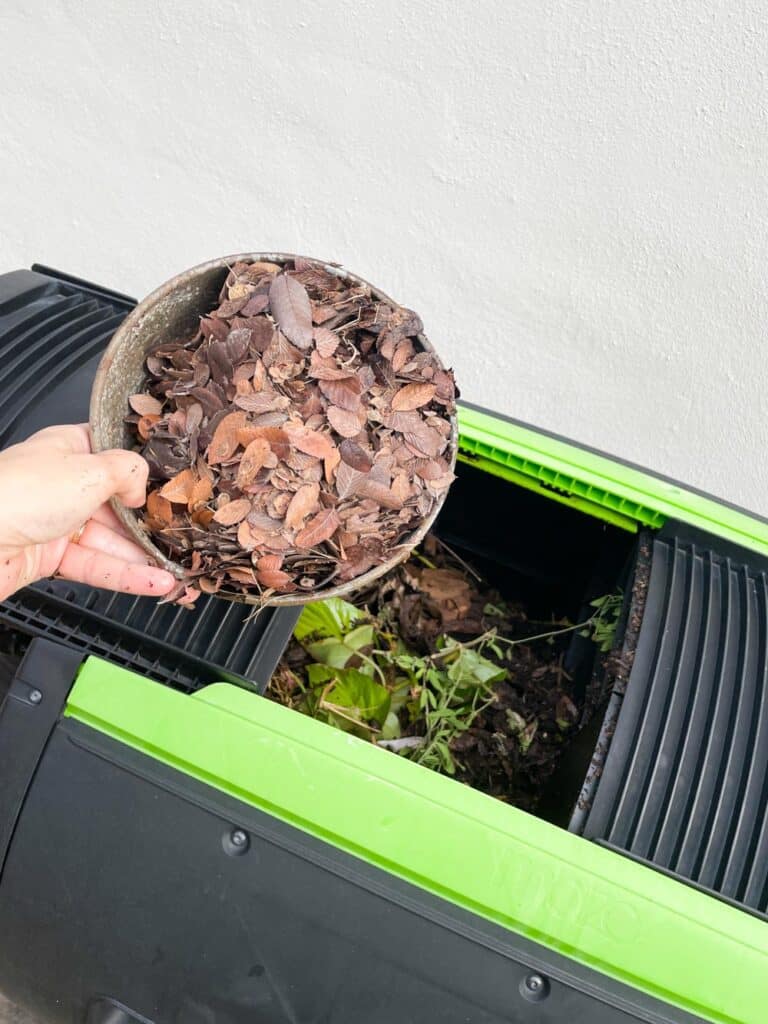
7. Mow leaves into your yard
Leaving a thick layer of leaves has the potential to hurt your turf grass. So if you’re concerned about that possibility, you can use a mulching mower to shred them into smaller pieces and mow them into your yard.
I would recommend first raking up as much as you can to repurpose in the above steps. Then mulch the remainder into your grass so that the shredded leaves filter in among the grass blades. Breaking them up will also help the organic material from the leaves return to the soil more quickly.
Rake Don’t Blow!
This one is hard for me, because I do like my handy electric leaf blower for a quick lawn care cleanup. However, when it comes to this seasonal chore it is best to rake leaves, not use a blower. Old fashioned raking leaves is better for the environment than leaf blowers, especially gas-powered blowers.
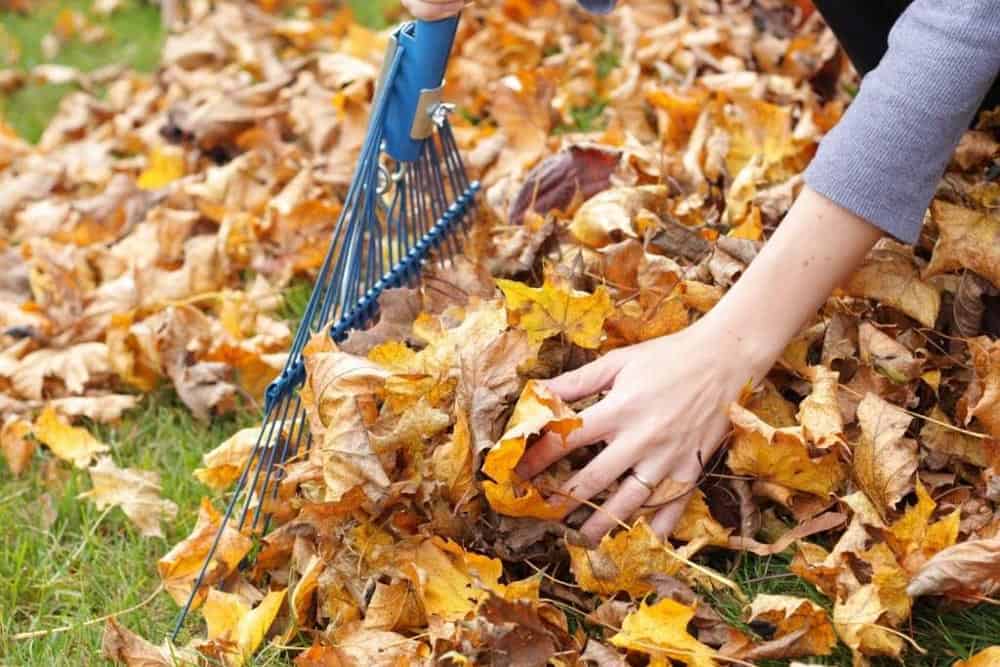
Even though blowers are the easiest way to clean up leaves, the gas powered versions are horrible polluters, creating both noise pollution and air pollution. A 2011 study showed that a gas-powered leaf blower emits 13x more carbon monoxide, 23x more carbon dioxide, and 300x more non-methane hydrocarbons than a Ford 150 pickup truck! If you have to use a blower, make it electric. Many cities are starting to ban gas-powered blowers.
Products for Raking Leaves
Here are some handy products for raking leaves and repurposing them in your yard and garden beds:
- Leaf Rake – extra handle helps reduce body strain.
- Leaf Scoops – make leaf pickup easy and fun with these giant gloves. My friend swears by them, and kids have a lot of fun with them too!
- Leaf Mulcher – helpful if you have a lot of leaves you need to mulch. You can also use a lawn mower.
- Reusable Leaf Bags – set of three 72 gallon water resistant and tear resistant bags that you can reuse for yard work.
- Compost Tumbler – this is the one I have used for the past year. It is a great way to learn about the composting process and keep your food scraps and garden clippings out of the landfill!
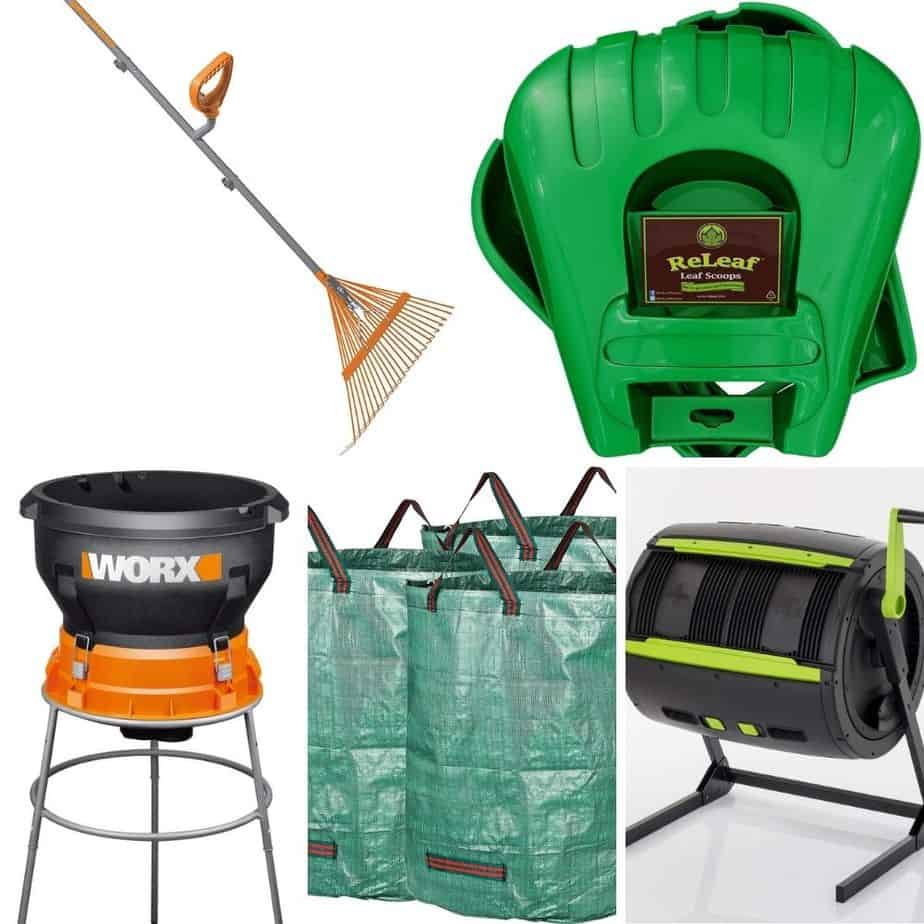
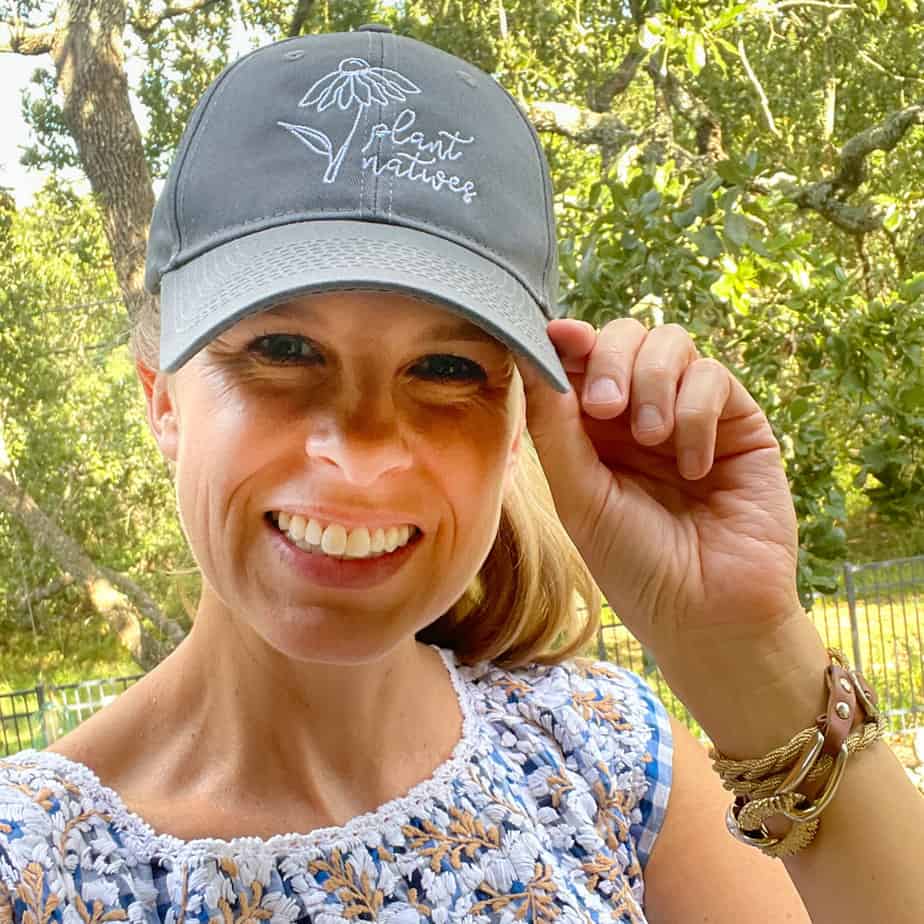
Welcome to Native Backyards! I’m Haeley from San Antonio, Texas, and I want to help you grow more native plants.
I have seen firsthand how the right plants can bring your yard to life with butterflies, bees, and birds. I’ve transformed my yard with Texas natives and I’m excited to share what I’ve learned with you.
Join my newsletter here! – each week I’ll send you helpful tips to make your native plant garden a reality!
Want to learn more about me and my garden? Check out my About page!
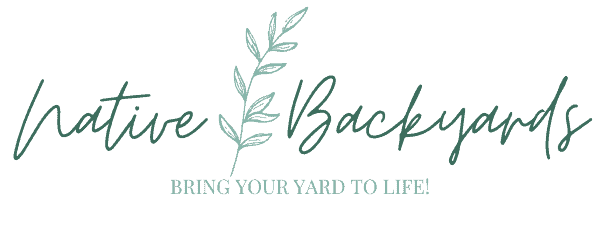
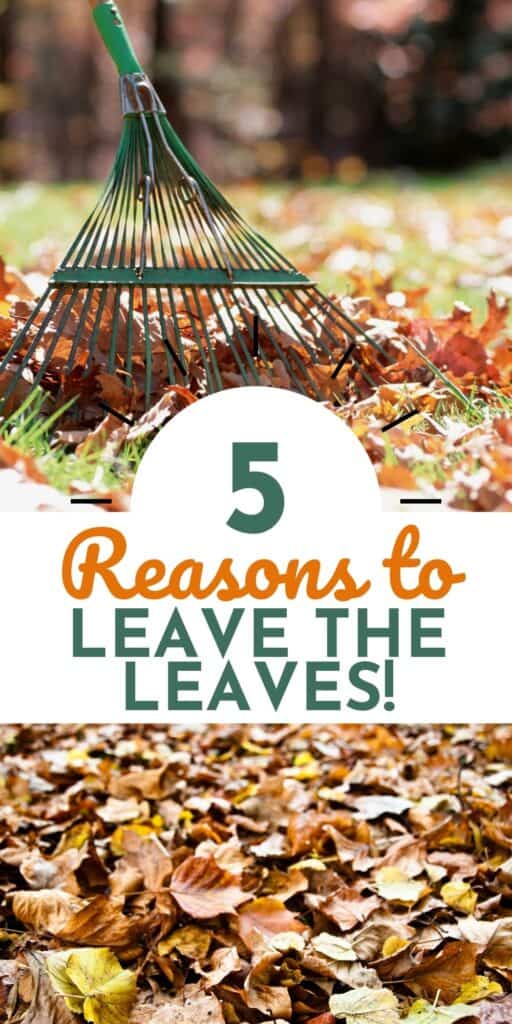
Excellent article. I am all for saving the environment and wildlife… shame so many people are obsessed with having the perfect lawn…I have only ever raked my back lawn once and this was to use all leaves as a protectiom from the frigid cold weather in Ohio…besides this I never rake leaves . People wonder why they hardly ever see bees butterflies etc in their gardens, this is one reason, because they get rid of what is natural in the wild also when they use chemicals to kill of bugs and insects and also weeds (un-loved flowers) from theur gardens i understand it may be necessary if certain insects are killing their tress and shrubs but i personally do not like any toxins in my home or garden (yard as they say in the USA).
Thanks for doing your part to help insects, Corrinna! I hope more and more people will start to think like you when it comes to their yards!
Whoops!! Sorry for spelling mistakes in my comments, I am writing in the dark in the wee hours of the morning!!
Thank you. Very interesting article. Been composting for years. I also take my kids leaves about 40 bags a year. I never take my yard till June. Then let clipping from mowing carry us thru summer. Good stuff. Here in NC got a surprise frost which made me cry. As tomatoes, green peppers, we’re still producing on Nov 18. Frost also took out a really good start to my birdhouse gourd plants. Asuugghh. Well thanks again.
Thanks for your note, Ken. It sounds like you are already a pro when it comes to saving leaves. Great work! I’m sorry to hear about that early frost. The best laid plans… 😉
I love your ideas & information. It just so happens my leaf chore started yesterday so all your tips will be used today 🙂
Yay! Glad you found these tips helpful. Best of luck!
Hello,
Great article! I do have a question, I recently moved into an older house in (costal Virginia) with lots of established trees and shade. However, there was not much (if any) yard care done over the years. The back yard and parts of the side yards have deep layers of leaves from multiple seasons. I am big believer in letting the natural critters winter in the leaves. However, when is a good time to start cleaning out these old leaves? I know that when they are left for long periods, mold and other unhealthy stuff will grow damaging the surrounding area. Thanks.
Hi Ralph, thanks for your comment! The general consensus when it comes to garden cleanup such as cutting back plants and removing fall leaves from the ground is to wait until temperatures are regularly in the 50s. By then most of the overwintering insects in the leaves while have emerged for the spring. At that point you may want to run a mower over the leaves to help them break down easier. “Leaf mold” or decomposed leaves can actually be a great soil additive for other areas of your yard or garden. Here is a helpful PDF about Leaf Mold: https://pepin.extension.wisc.edu/files/2017/08/170801-Leaf-Mold.pdf
I was leaving the leaves and mulching. After doing a little digging though, decaying dried leaves massively increase the number of free radicals in the the soil. The amount is significant enough to greatly increase chance of cancer (the white paper was published in nature). I have 3 year old who loves playing outside, so I’m back to raking leaves.